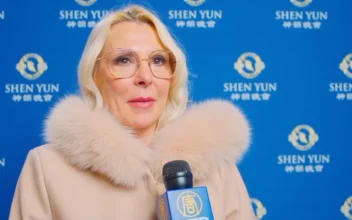The Shen Yun Symphony Orchestra is returning to New York City for one day of performances, at the David Geffen Hall in Lincoln Center on Oct. 22.
The symphony orchestra is made of members from the eight orchestras of Shen Yun Performing Arts’ touring groups, and regularly includes Shen Yun’s original compositions in the orchestra programming.
New York-based Shen Yun is famous for reviving and setting the standard for classical Chinese dance, as well as its blend of ancient Chinese and Western classical music. A few distinct and representative Chinese instruments like the erhu and pipa are included in an otherwise classical Western orchestra, and the musicians perform only original compositions during the dance performances. Ancient Chinese melodies are arranged to take advantage of the grandeur of a classical symphony, and the result is both unique and universally beloved.
The orchestra was formed in response to the high demand from audiences to hear more of the orchestra, and made its debut at Carnegie Hall in 2012.
This year’s program includes several original compositions, the list of which has not been made public yet, as well as classical favorites: Sibelius’s Finlandia, the final movement of Dvorak’s New World Symphony, and the “Butterfly Lovers” Violin Concerto.
The Butterfly Lovers concerto is one of the most famous pieces of Chinese music; though many may not be familiar with the name, the opening melody has been widely used, and most are likely to recognize the popular tune, which originates from Chinese folk opera.
Violinist Debbie Jin will be the soloist for the concert, and a recording of her playing the piece can be found on the Shen Yun Creations streaming platform.
Ms. Jin, a concertmaster with Shen Yun, has been with the company since 2018. She began her musical studies from a young age, learning both violin and piano, and is the winner of the gold medal at the 2021 Fei Tian Music Competition.
Story of Fate
During the 20th century, Chinese composers took an interest in Western style opera, and the Butterfly Lovers Violin Concerto is the most enduring work of the period.
Written by He Zhanhao and Chen Gang in 1959, the piece is based on a Chinese folk tale set in the Eastern Jin Dynasty (266–420 C.E.), telling the story of Liang Shanbo and Zhu Yingtai.
The traditional belief of “yuanfen,” meaning predestined relationship, fate, or destiny, plays a big role in the story.
According to Shen Yun, the composers knew how widely appreciated folk music and various branches of Chinese opera were throughout the country, and included characteristics of those genres in their piece.
The violin takes on the characteristics of the Chinese zither, erhu, and pipa, representing Zhu Yingtai, the heroine of the story. Liang Shanbo, the young man, is represented by the cello.
The story begins when Zhu Yingtai disguises herself as a boy so as to be able to attend school, and there she meets Liang Shanbo—the encounter is marked with a duet between the violin and cello as they form a fast friendship. The music paints the picture of their three years together at the academy.
“All the while, deep emotions develop between them. When their studies end they have to part, but not before promising each other to meet again,” reads the Shen Yun Creations description of the recording.
The piece takes a turn in the Pesante-Piu mosso-Duramente movement, marking a moment of despair.
Zhu Yingtai, who encouraged Liang Shanbo to come to her home to court her sister intending to arrange a meeting out of disguise, returns home from school only to discover that she has been promised to the son of a rich family.
The violin’s dramatic solo characterizes our heroine’s tearful arguments with her father, and it’s in the midst of this that Liang Shanbo again enters the scene.
Shocked to discover that Zhu Yingtai is a girl—and already betrothed—the cello and violin embark on a duet in presto, culminating in one of the most powerful sections of the work.
Tormented by grief, Liang Shanbo passes away, and Zhu Yingtai is soon to follow. The Chinese percussion instruments punctuate the tragic events.
But in the last section of the piece, the original themes are brought back in a bittersweet fashion. In the story, the lovers turn into butterflies, and fulfill their destiny together.
From The Epoch Times










